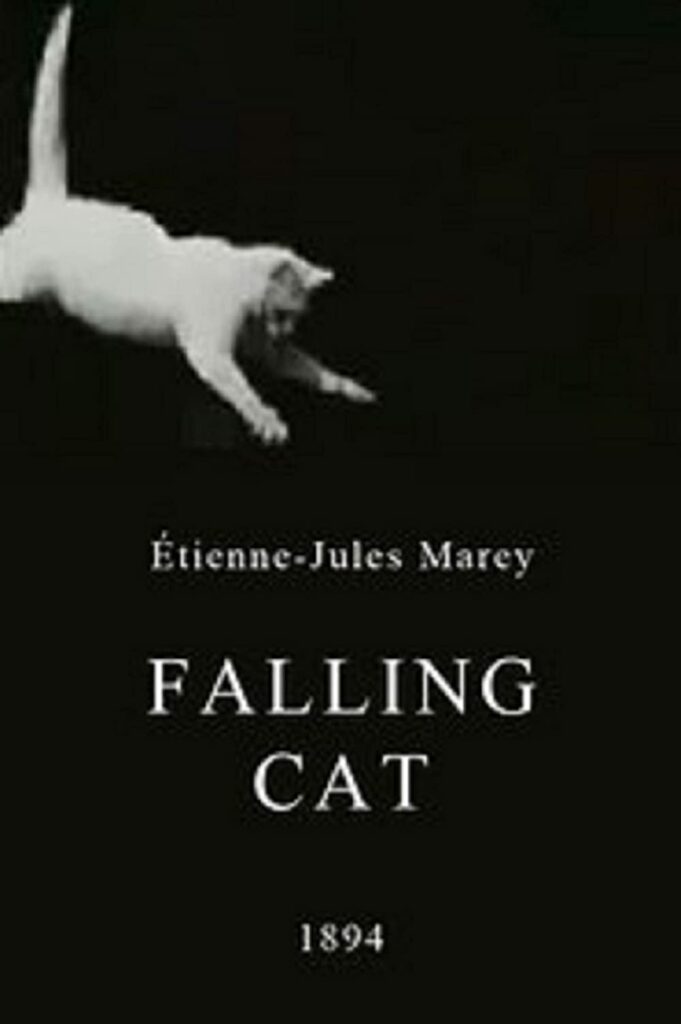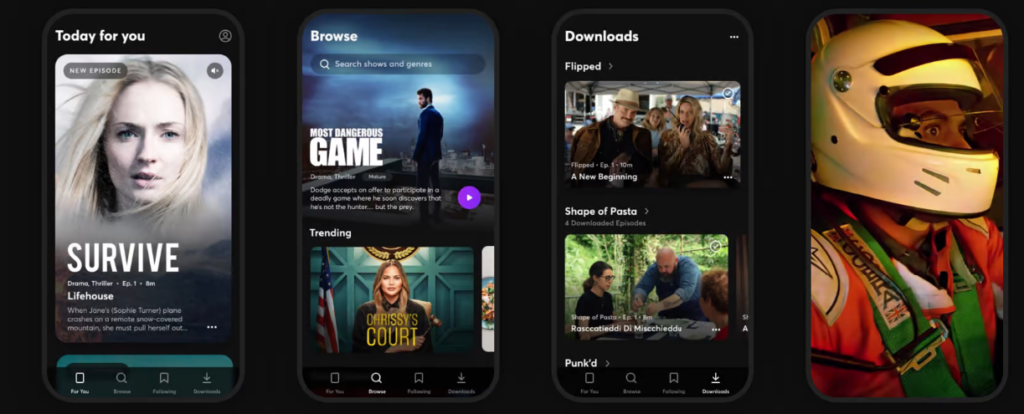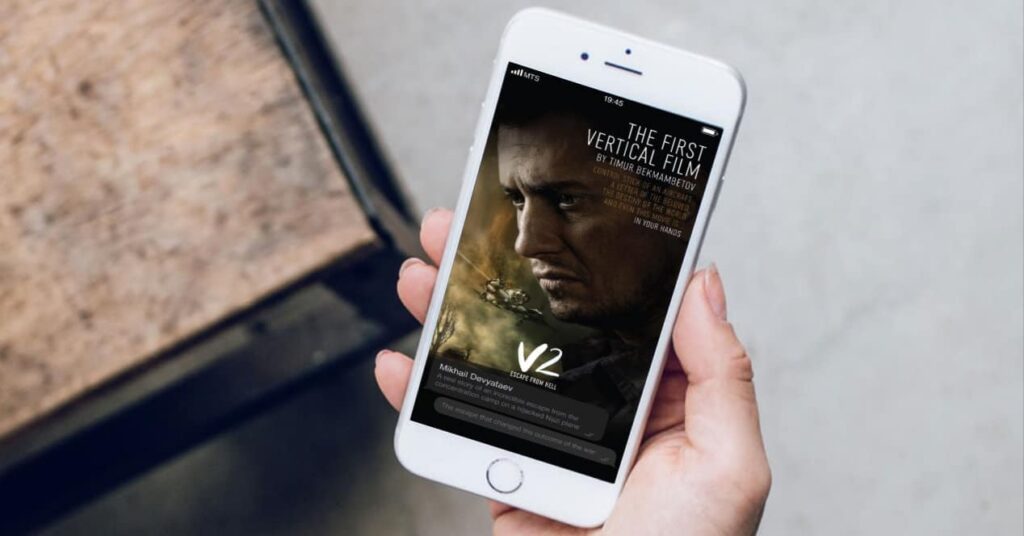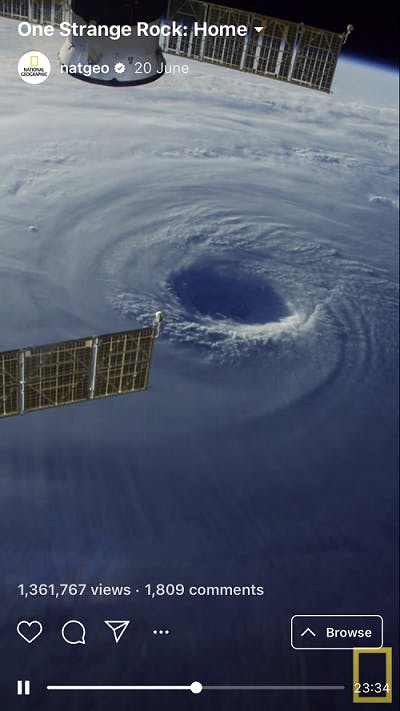
The very Beginning
People began experimenting with aspect ratios for films early on. Étienne-Jules Marey, for example, created the first vertical moving picture in 1894. This was published under the name “Falling cat” and shows exactly what the name describes: a falling cat (IMDb).
Australian television series “Content
The series consists of seven parts and belongs to the genre ScreenLife. The basic idea of the series is that it is shown exclusively from the perspective of the main character’s phone screen, which can be particularly exciting when the viewer receives private text messages or app notifications (Haridy, 2020).
The Stunt Double by award-winning filmmaker Damien Chapelle
The whole nine-minute film was produced in 2020 as an advertisement for Apple using an iPhone 11 camera. The whole film is basically a replay of famous moments from the past century of cinema, but from a vertical perspective. Chapelle’s experiment takes advantage of the vertical perspective by consistently directing the viewer’s gaze upwards or downwards through clever design techniques (ibid., 2020).
On a smartphone, it makes the viewer feel as if they are diving right into the format and shows some creative ways of framing vertical films. On a conventional horizontal screen, however, the vertical film makes little sense. The question now is whether consumers want to watch elaborately produced productions on a small smartphone or tablet (ibid., 2018)?
Quibi – Streaming platform for mobile devices
Jeffrey Katzenberger, who not only led Walt Disney through the upheaval in the 1980s and 90s but also founded DreamWorks Pictures together with Steven Spielberg, hardly missed an important trend in the entertainment industry. And he also registered the trend towards the use of smartphones and founded Quick Bites (Quibi) in 2018, which was to be a completely new kind of streaming platform (ibid., 2018).
The content will be produced for younger audiences in the form of 10-minute episodes to be played on smartphones either vertically or horizontally. Many big names from Hollywood embraced the novelty by creating lots of content all around 10 minutes long. In 2020, the app was bought by Roku, which regularly uploads new content that can be consumed for free (ibid., 2018).

V2 – Escape from Hell

Filmmaker Timur Bekmambetov began in 2020 a production on a blockbuster about World War II: V2- Escape from Hell. The film was shot in vertical aspect ratio and the $10 million budget was partly financed through a partnership with MTS, Russia’s largest mobile operator. The film was produced in two versions: horizontal for cinemas or large TV screens and vertical for “younger audiences” on mobile phones. Bekmambetov had often realised unusual projects before. In 2019, he had already realised the Snapchat series Dead of the Night in the same format (ibid., 2018).
19:6 Livestream

But vertical formats have also arrived in livestreaming. In 2021, for example, the Supercup was broadcast vertically for the first time in the UK and Ireland in 16:9 format via TikTok and the SkySport app. The producers are pleased with the ratings and confirmed that more viewers were reached, and more followers followed the brand (DFL, 2021).
Vertical video in commercials

With 75% of the world’s video use happening on mobile phones and many users holding them in vertical mode, it is hardly surprising that ads are also being produced in these formats. Vertical video fits both of these factors, creating an intimate, immersive and distraction-free viewing experience (Gilliland, 2019).
After Snapchat pioneered the format in 2013, more and more platforms and brands are picking up on this trend. However, not all brands use portrait formats for their videos but still insist on landscape format to convey more context and depth (ibid., 2019).
A very well-known brand where the videos work very well even though one would think they should be played out in wide format for the content is National Geographic. Despite the nature footage and sometimes long documentaries, the brand has many views on Instagram and was even chosen as a launch partner for IGTV at the time (ibid., 2019).
The Spotify brand has also picked up on the trend very successfully, engaging a number of big-name stars to shoot exclusive vertical videos for its mobile app. One notable example is Selena Gomez, whose “Bad Liar”. But other stars have already produced their music videos in vertical format alongside the classic horizontal videos (ibid., 2019).
Closing Remarks
But besides Mercedes Benz, Netflix and many other brands, Instagram has probably also shaped the trend with its daily vertical stories. In the meantime, Youtube and TikTok have also made the format their own, as they had to keep up with the trend in order not to fall behind (ibid., 2019).
For brands investing in mobile video advertising, vertical video is here to stay, but even long content can work in the format, as National Geographic shows.
Being vertical doesn’t automatically guarantee success, of course. As long as content is viewed on TVs or laptops, there will always be places with cinematic style of landscape. Moreover, videos are not only watched on mobile phones. This means that it should be seen as an additional or alternative format, or as part of a platform-specific campaign.
However, as the producers and brands above show, 9:16 has proven to be a creative, engaging and practical format for mobile audiences.
Bibliography
IMDb. Falling Cat. https://www.imdb.com/title/tt2049440/
Haridy, Rick. (2020, September 1). The ups and downs of vertical cinema. https://newatlas.com/home-entertainment/vertical-cinema-smartphone-history-aspect-ratio-quibi/
Gilliland, Nikki. (2019, November 23). Five examples of brands using vertical video. https://econsultancy.com/brands-vertical-video-social-examples/
Techsphere. (2020, September 9). Apple Short Movie | Shot on iPhone by Damien Chazelle – Vertical Cinema. https://www.youtube.com/watch?v=5f1WymwaOVo&ab_channel=Techsphere%F0%9F%A5%B2
DFL. (2021, August 23). Vertical Video: Supercup erstmals im Format 9:16 übertragen. https://www.dfl.de/de/innovation/vertical-video-supercup-erstmals-im-format-9zu16-uebertragen/
Gilliland, Nikki. (2019, November 23). Five examples of brands using vertical video. https://econsultancy.com/brands-vertical-video-social-examples/